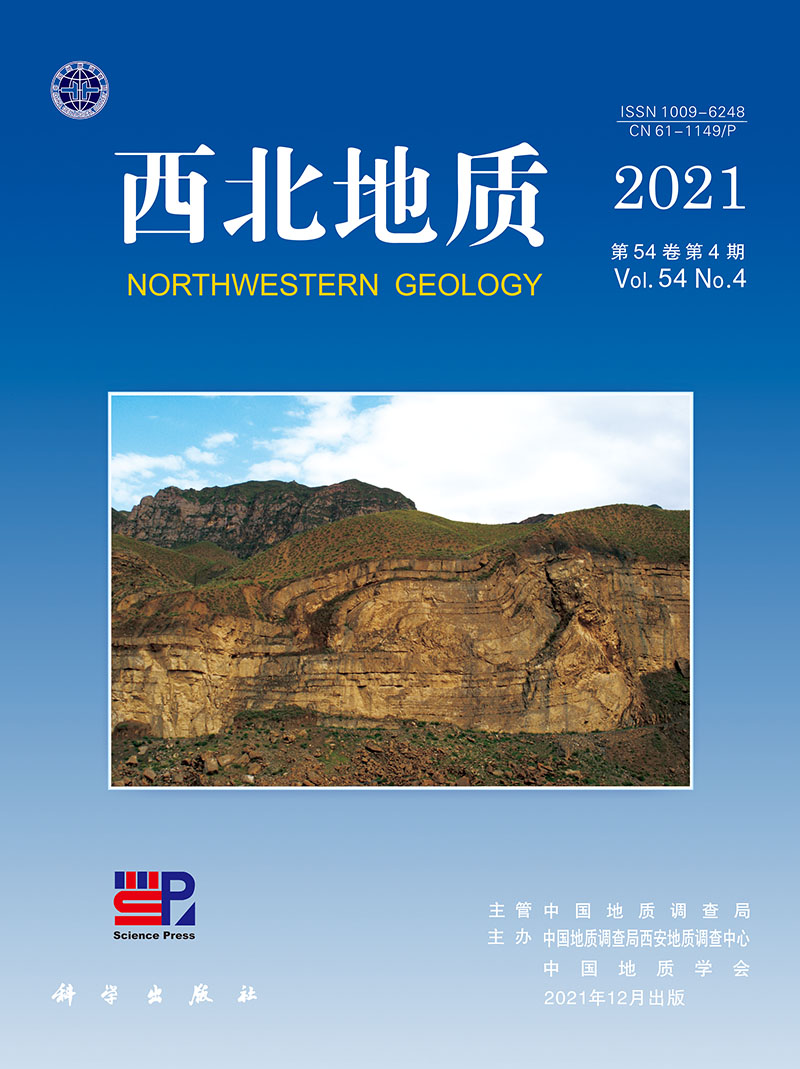|
陈国忠, 龚全胜, 梁志录, 等.西秦岭甘肃段特大型金矿的地质地球化学特征及其成岩成矿年龄[J]. 西北地质, 2017, 50(4):91-104.
Google Scholar
|
|
CHEN Guozhong, GONG Quansheng, LIANG Zhilu, et al. Geological, Geochemical Characteristics and Diagenetic Age of the Super-large Gold Deposits in Western Qinling, Gansu Province[J]. Northwestern Geology, 2017, 50(4):91-104.
Google Scholar
|
|
陈化奇.多元素衬值累加晕在化探异常评价中的应用[J]. 甘肃地质, 2008, 17(4):90-93.
Google Scholar
|
|
CHEN Huaqi.Application of Multi-element Contrast Accumulative Halo in Evaluating Geochemical Anomalies[J]. Gansu Geology, 2008, 17(4):90-93.
Google Scholar
|
|
董庆吉, 陈建平, 唐宇.R型因子分析在矿床成矿预测中的应用-以山东黄埠岭金矿为例[J]. 地质与勘探, 2008, 44(4):64-68.
Google Scholar
|
|
DONG Qingji, CHEN Jianping, TANG Yu.Application of R Type Factor Analyses in Mineralization Prognosis:by an Example of Huangbuling Gold Deposit, Shandong Province[J]. Geology and Prospecting, 2008, 44(4):64-68.
Google Scholar
|
|
代西武, 杨建民, 张成玉, 等.利用矿床原生晕进行深部隐伏矿体预测-以山东埠上金矿为例[J]. 矿床地质, 2000, 19(3):245-256.
Google Scholar
|
|
DAI Xiwu, YANG Jianmin, ZHANG Chengyu, et al. The Application of primary haloes of the ore deposit to the prognosis of deep concealed orebodies——Exemplified by the Bushang gold deposit in Shandong Province[J]. Mineral Deposits, 2000, 19(3):245-256.
Google Scholar
|
|
侯景儒, 黄竞先.地质统计学及其在矿产储量计算中的应用[M]. 北京:地质出版社, 1982.
Google Scholar
|
|
HOU Jingru, HUANG Jingxian.Geostatistics and its application in the calculation of mineral reserves[M]. Beijing:Geological Publishing House, 1982.
Google Scholar
|
|
何希杰, 劳学苏.回归分析中临界相关系数的求值方法[J]. 河北工程技术高等专科学校学报, 1993, (2):12-19.
Google Scholar
|
|
HE Xijie, LAO Xuesu.The Method for Regression Analysis Critical of Related Coefficient[J]. Journal of Hebei Engineering and Technical College, 1993, (2):12-19.
Google Scholar
|
|
刘冲昊, 刘家军, 王建平, 等.陕西省略阳县铧厂沟金矿北矿带地球化学原生晕特征及其地质意义[J]. 中国地质, 2012, 39(5):1397-1405.
Google Scholar
|
|
LIU Chonghao, LIU Jiajun, WANG Jianping, et al. Primary Halo Characteristics of the North Ore Zone in the Huachanggou Gold Deposit, Lueyang County, Shaanxi Province[J]. Geology in China, 2012, 39(5):1397-1405.
Google Scholar
|
|
李惠.甘肃李坝金矿床定位预测的叠加晕模式[J]. 黄金地质, 2010, 6(4):33-38.
Google Scholar
|
|
LI Hui.The Model of Superimposed Halos for Blind Ore Locating Prediction in Liba Gold Deposit, Gansu[J]. Gold Geology, 2010, 6(4):33-38.
Google Scholar
|
|
李惠, 张国义, 禹斌, 等.金矿区深部盲矿预测的构造叠加晕模型及其找矿效果[M]. 北京:地质出版社, 2006.
Google Scholar
|
|
LI Hui, ZHANG Guoyi, YU Bin, et al. Structural Superimposed Halo Model for Blind Ore Prediction in Deep Gold Mining Area and Its Prospecting Effect[M]. Beijing:Geological Publishing House, 2006.
Google Scholar
|
|
李惠, 张文华, 刘宝林, 等.中国主要类型金矿床的原生晕轴向分带序列研究及其应用准则[J]. 地质与勘探, 1999, 35(1):32-35.
Google Scholar
|
|
LI Hui, ZHANG Wenhua, LIU Baolin, et al. The Study on Axial Zonality Sequence of Primary Halo and Some Criteria for the Application of This Sequence for Major Types of Gold Deposits in China[J]. Geology and Prospecting, 1999, 35(1):32-35.
Google Scholar
|
|
刘家军, 毛光剑, 吴胜华, 等.甘肃寨上金矿床成矿特征与形成机理[J]. 矿床地质, 2010a, 29(1):85-100.
Google Scholar
|
|
LIU Jiajun, MAO Guangjian, WU Shenghua, et al. Metallogenic Characteristics and Formation Mechanism of Zhaishang Gold Deposit, Southern Gansu Province[J]. Mineral Deposits, 2010a, 29(1):85-100.
Google Scholar
|
|
刘家军, 毛光剑, 吴胜华, 等.甘肃寨上金矿床矿物组成特征与矿质沉淀机理[J]. 中国地质, 2010b, 37(2):453-462.
Google Scholar
|
|
LIU Jiajun, MAO Guangjian, WU Shenghua, et al. Characteristics of Mineral Association and Mechanism of Au Precipitation in the Zhaishang Gold Deposit, Southern Gansu[J]. Geology in China, 2010b, 37(2):453-462.
Google Scholar
|
|
刘晓玲, 陈建平.R型因子分析在青海省治多杂多地区成矿预测中的应用[J]. 物探化探计算技术, 2010, 32(3):332-336.
Google Scholar
|
|
LIU Xiaoling, CHEN Jianping.A Case Study of R-Factor Analysis for Metallogenic Prognosis Applied to Zhiduo-Zaduo Area of Qinghai Province[J]. Computing Techniques for Geophysical and Geochemical Exploration, 2010, 32(3):332-336.
Google Scholar
|
|
邢利琦, 刘炳璋.矿床原生地球化学晕分带性研究[J]. 四川地质学报, 2011, 31(4):489-495.
Google Scholar
|
|
XING Liqi, LIU Bingzhang.Study of Zonation of Primary Halo of Hydrothermal Deposits[J]. Acta Geologica Sichuan, 2011, 31(4):489-495.
Google Scholar
|
|
严汝珍, 王文华.钻孔原生晕组分分带及圈定异常方法[J]. 四川地质学报, 1989, 9(2):64-70.
Google Scholar
|
|
YAN Ruzhen, WANG Wenhua.The Zoning and Anomaly Delineation Method of the Primary Halo in Borehole[J]. Acta Geologica Sichuan, 1989, 9(2):64-70.
Google Scholar
|
|
姚玉增, 金成洙, 肖向军.因子分析在辽南卧龙泉地区化探次生晕异常优选中的应用[J]. 物探与化探, 2005, 29(1):10-12.
Google Scholar
|
|
YAO Yuzeng, JIN Chengzhu, XIAO Xiangjun.The Application of Factor Analysis to the Optimization of Geochemical Secondary Halos:A Case Study of Wolongquan Area, Southern Liaoning Province[J]. Geophysical and Geochemical Exploration, 2005, 29(1):10-12.
Google Scholar
|
|
张玉恒, 刘应平, 张海.因子分析在化探上的应用-以四川九龙县李伍预测区为例[J]. 四川地质学报, 2012, 32(1):112-115.
Google Scholar
|
|
ZHANG Yuheng, LIU Yingping, ZHANG Hai.The Application of Factor Analysis to Geochemical Prospecting——By the Example of the Liwu Ore District[J]. Acta Geologica Sichuan, 2012, 32(1):112-115.
Google Scholar
|
|
章永梅, 顾雪祥, 程文斌, 等.内蒙古柳坝沟金矿床原生晕地球化学特征及深部成矿远景评价[J]. 地学前缘, 2010, 17(2):209-221.
Google Scholar
|
|
ZHANG Yongmei, GU Xuexiang, CHENG Wenbin, et al. The Geochemical Features of Primary Halo and the Evaluation of Deep Min-eralization Prospect of Liubagou Gold Deposit, Inner Mongolia[J]. Earth Science Frontiers, 2010, 17(2):209-221.
Google Scholar
|
|
邵跃.热液矿床岩石测量(原生晕法)找矿[M]. 北京:地质出版社, 1997.
Google Scholar
|
|
SHAO Yue.Rock Measurements (Primary halo method) in the Hydrothermal Deposits Prospecting[M]. Beijing:Geological Publishing House, 1997.
Google Scholar
|
|
王建新, 臧兴运, 郭秀峰, 等.格里戈良分带指数法的改良[J]. 吉林大学学报(地球科学版), 2007, 37(5):884-888.
Google Scholar
|
|
WANG Jianxin, ZANG Xingyun, GUO Xiufeng, et al. The Improved Gregorian's Zoning Index Calculating Method[J]. Journal of Jilin University (Earth Science Edition), 2007, 37(5):884-888.
Google Scholar
|
|
王文森.变异系数-一个衡量离散程度简单而有用的统计指标[J]. 中国统计, 2007, (6):41-42.
Google Scholar
|
|
WANG Wensen.Coefficient of Variation-A Simple and Useful Statistical Measure of Dispersion[J]. China Statistics, 2007, (6):41-42.
Google Scholar
|
|
Hofstra A H, Cline J S.Characteristics andModels for Carlin-type Gold Deposits[J]//Hagemann S G, Brown P E (eds.), Gold in 2000.Reviews in Economic Geology, 2000, 13:163-220.
Google Scholar
|






 DownLoad:
DownLoad: